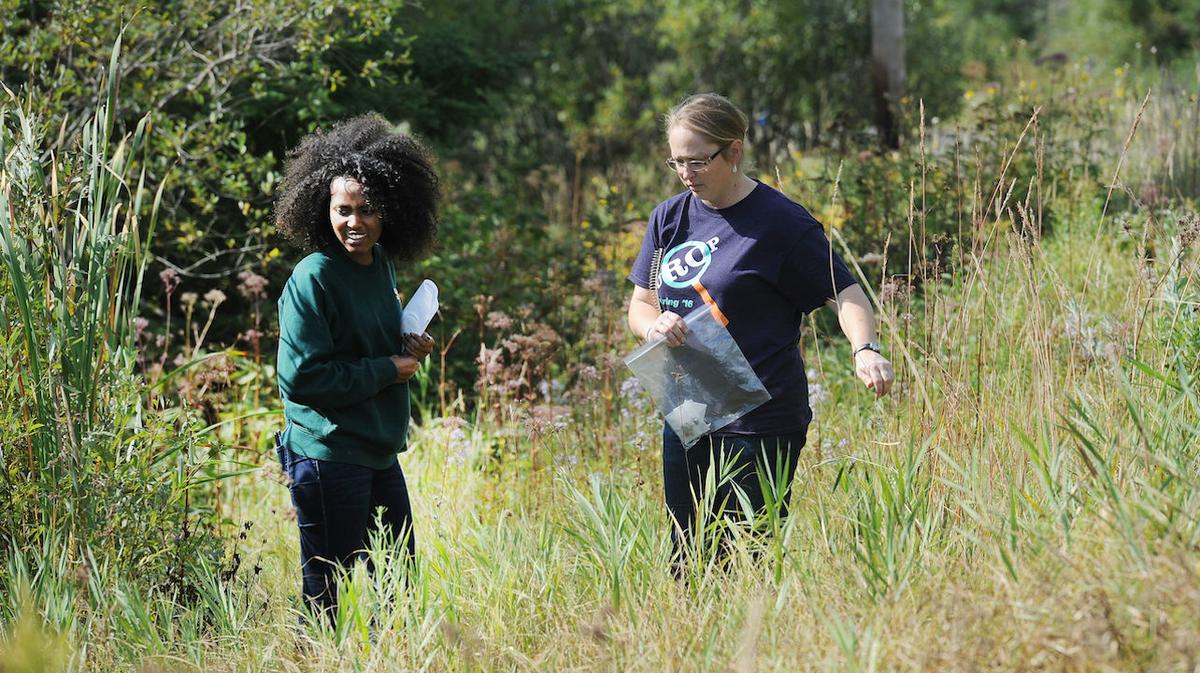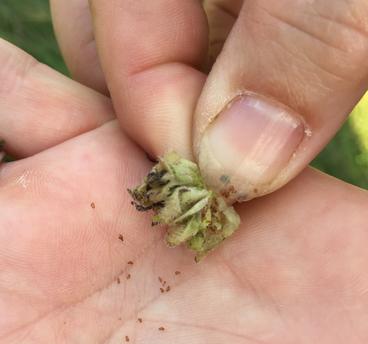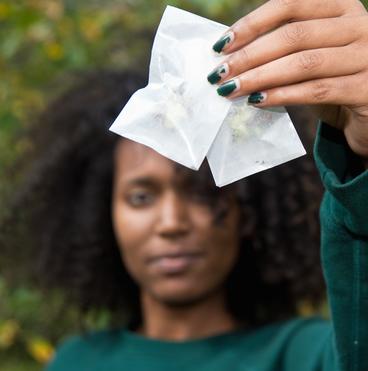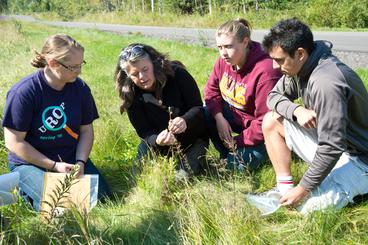Ababa Morke and Tami Rahkola leave the country road and climb the bank through tall weeds. In the clearing made by the railroad tracks, they have an easier time identifying individual plants and that's where they find it, Companula servicaria, or Bristly Bellflower. Just a few of the dime-sized flowers, purple bursts of petals, remain on the stalk.
Ababa and Tami are both seniors majoring in biology. In the course, Plant Diversity, they learn about Project Baseline, a research project managed by their professor, Julie Etterson.
The class went one step beyond the classroom. They joined the project. The Bristly Bellflower seeds Ababa, Tami and their classmates gathered will be added to the National Science Foundation (NSF) Project Baseline research project.
"We had to wait until the Bellflower made seeds before we could harvest it," said Ababa. The Bellflower is one of the more interesting plants collected because it is so new to North America. "There are fewer plants than ever in Scandinavia, where it came from," said Tami. "At the same time the plants are spreading in Northern Minnesota."
Project Baseline
Professor Julie Etterson from UMD's Department of Biology is the principal investigator for the $1.6 million NSF project. She and her colleagues on both coasts have gathered over eight million seeds from many populations of 60-plus species. The seeds make up a living seed bank that can be resurrected in the future to study how natural selection has changed wild plant populations over time. Seeds are stored in cold/dry storage at -18C in Fort Collins, Colo. in a storage facility space donated by the National Center for Genetic Resources Preservation.
The first phase of the project, the collection phase, started in 2011. Julie is looking forward to the second phase. “In 5, 10, and even 50 years, we’ll be able to plant ancestral seeds next to contemporary collections," Julie said. "When plants withdrawn from the seed bank and wild plants grow side-by-side we can directly observe evolutionary changes that have occurred." Scientists will be able to see how a species reacts to drought, insect invasion, or other changes in their surroundings.“It’s important to do this now so future evolutionary biologists can examine how changes, including climate change, have affected these species," Julie says.



